The Purest of Teas - White Tea
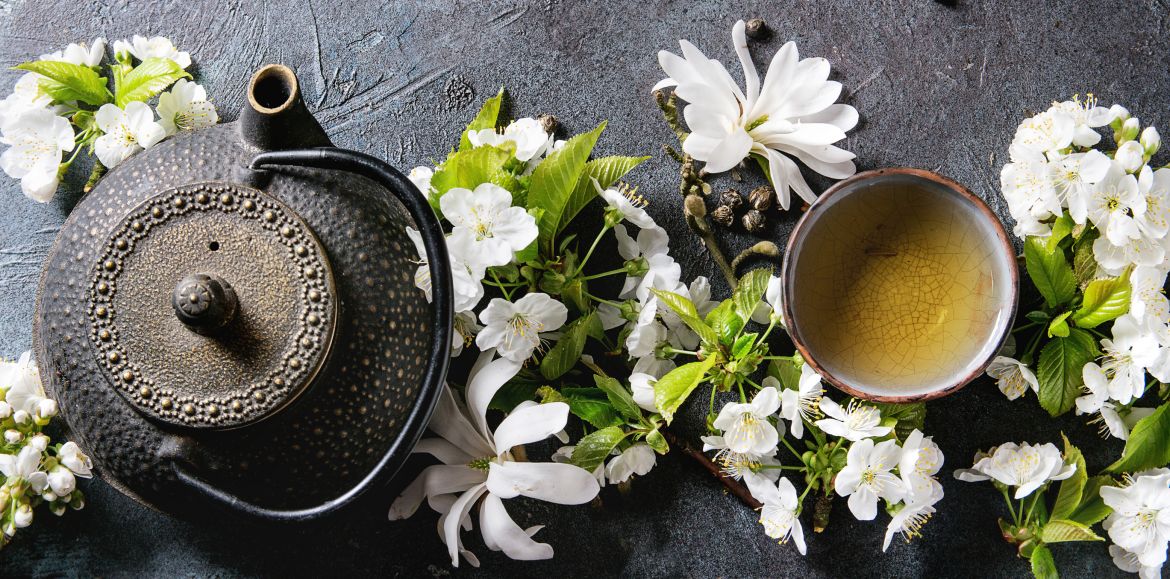
What is White Tea?
Originally named for the very fine silvery white hairs that cover the leaf bud as it develops, White Tea is regarded as one of the rarest and most prized of all teas. It is the least and most carefully processed of all the teas and picked in spring, where the only the youngest leaves and silvery buds are selected to create a sweet, dewy flavour. The tea leaves are simply picked, gently laid out to wither and then expertly dried. This simplicity, however, takes great skill and subtlety from the tea master to create a truly balanced and nuanced tea. The most prized and celebrated of the white teas are Silver Needle and White Peony, not only for the rareness and subtle flavours but also for their health benefits.
How is White Tea Produced?
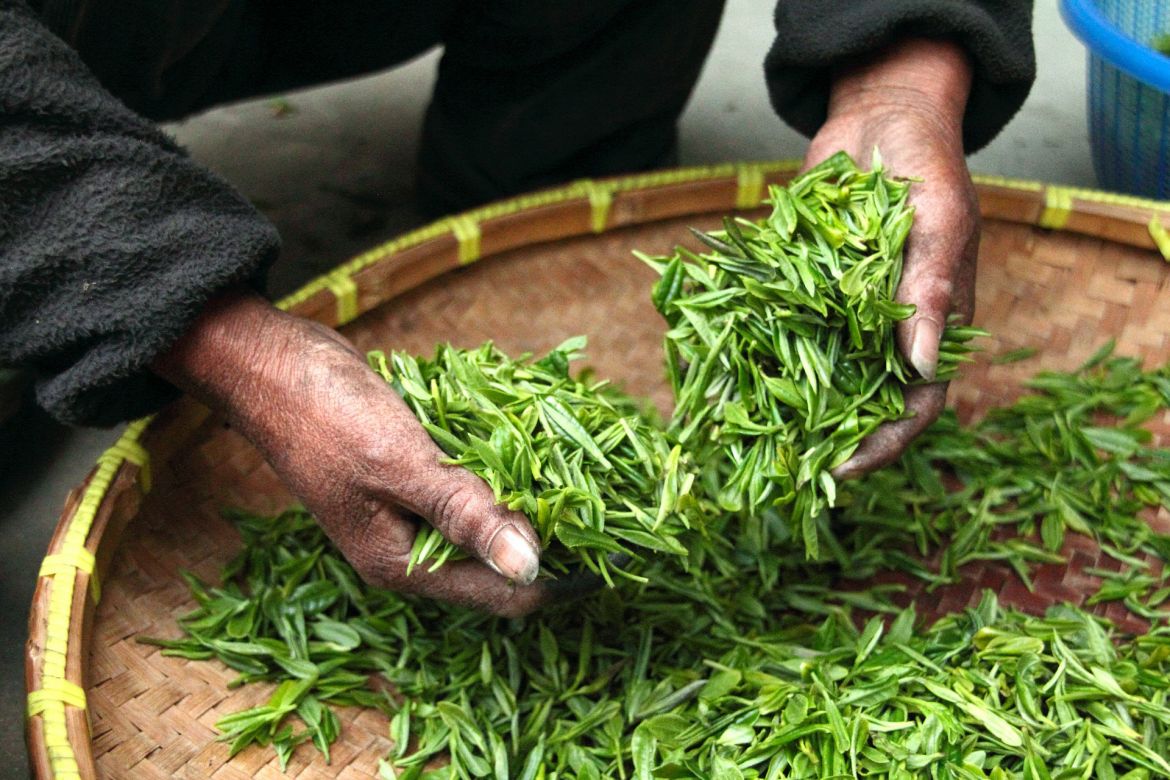
The key to white tea production is a patiently slow yet minimal withering and drying stages, which allows for a hint of oxidisation, preserving flavour and form of the tea leaves.
White tea undergoes fewer steps than any other tea including Green, Oolong and Black teas. The freshly plucked buds or buds and leaves are briefly withered, during which very light oxidation naturally occurs that turns them grey-green or grey-brown.
The leaves are moved directly to the drying step, which is done gently and under carefully controlled conditions either naturally (by air or sun) or mechanically (by a hot air machine).
Four of Our Favourite White Teas
The simplicity of the processing belies the exceptional qualities of the tea and the high prices it commands.
Here are four of our favourites: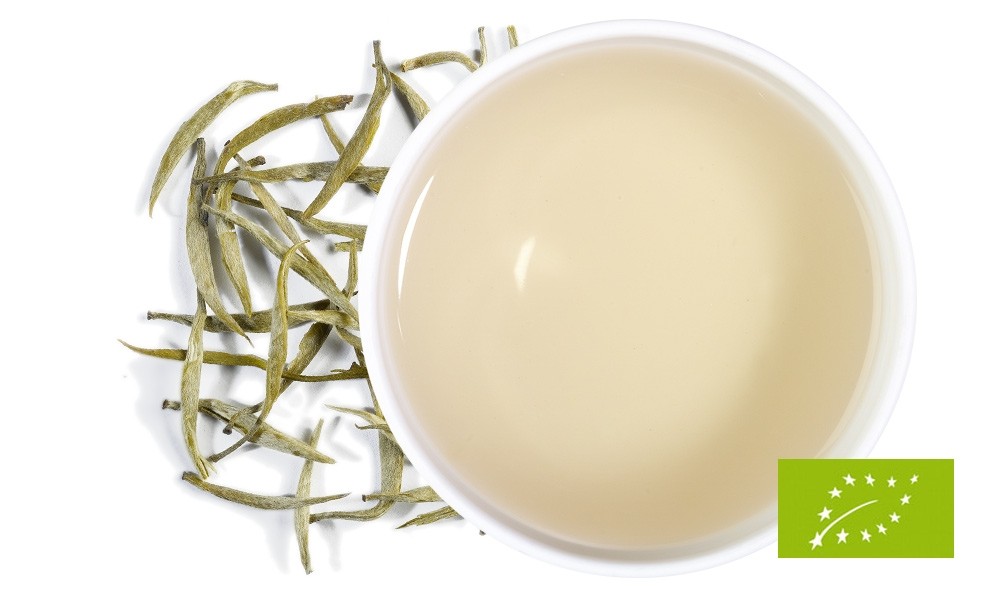
Made from lustrous, silvery buds (unopened leaf shoots) that are covered in white downy fuzz. About 30,000 are needed for one kilo of finished tea. The tea is very delicate, and if brewed with the correct water temperature of 80 ° C, the cup is almost colourless.
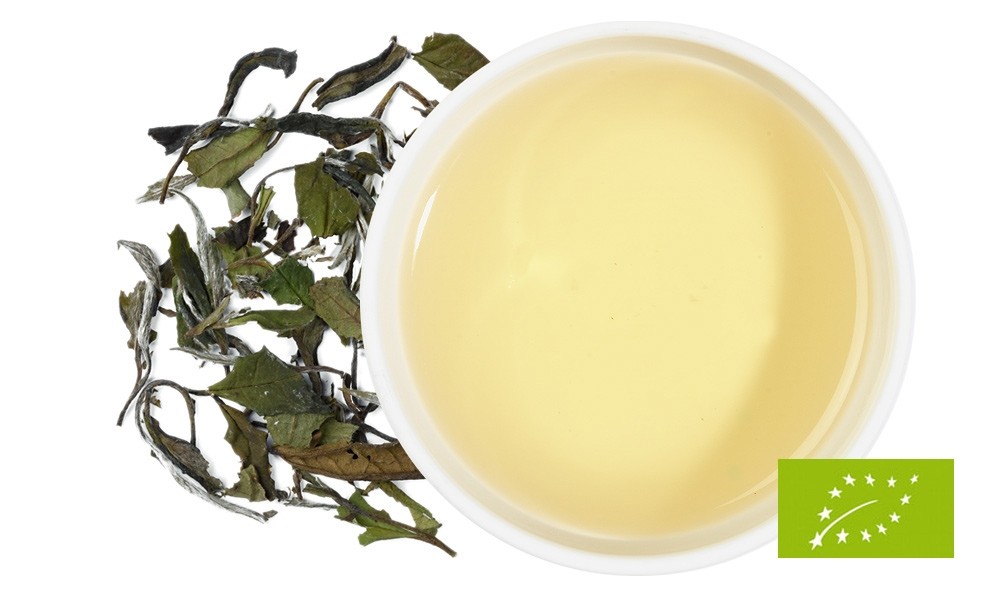
A fine combination of bud with of the two youngest leaves,
which contribute to a sweet, mildly grassy flavour.
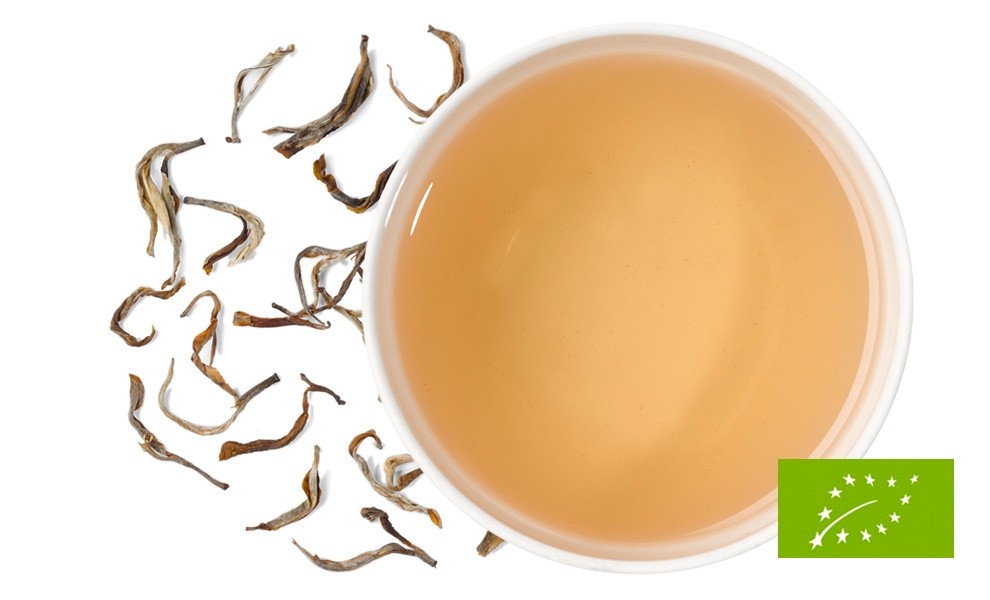
An excellent white tea with a slightly tart berry note.
For this Cui Min tea, the first young leaf buds and the not quite open, youngest leaves of the tea bush are picked by hand between March and April. Very careful processing creates an excellent white tea with a slightly tart berry note and a wonderfully elegant sweet nuance.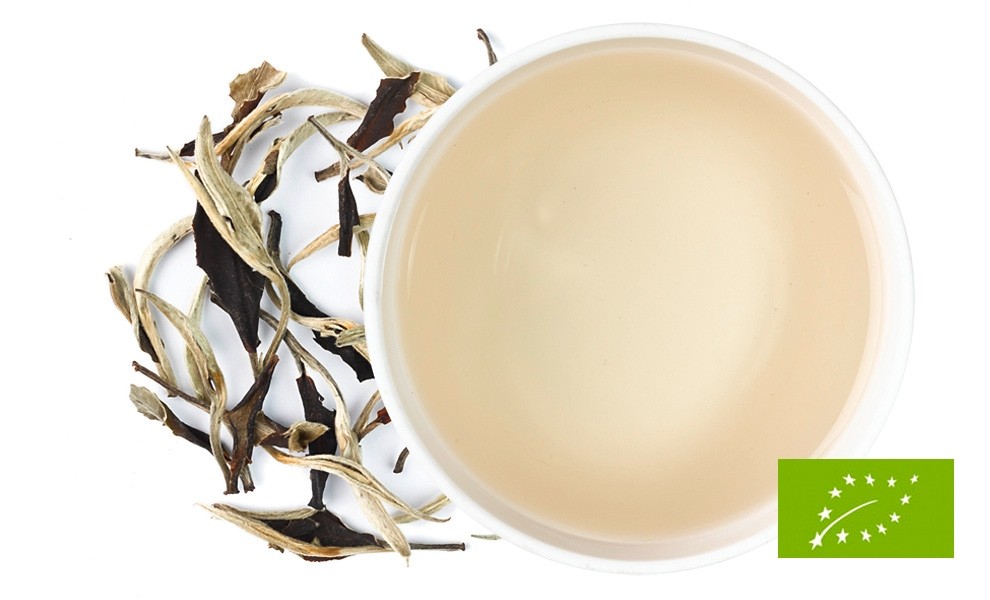
Yunnan Moonlight First Grade Dongzhai
A fine specialty with fine chocolatey note. Named 'Moonlight' due to the unusual appearance of its dark leaves representing the deep night sky, while the velvety-bright leaf symbolizes the moon. The open leaves are characterized by an extraordinary size. The precious tea buds are covered by especially many fluffy, silver-white hairs. The first infusion tastes of velvety chocolate with a gentle the floral note. In the second infusion, the tea unfolds to a gentle sweetness, which harmoniously corresponds to the subtle cocoa note.
Top Tip: If you’re new to white tea and want to experience the true character of this remarkable drink, opt for either Silver Needle or White Peony (Pai Mu Tan).
Find out more about White Tea here!
White Tea – Potted History
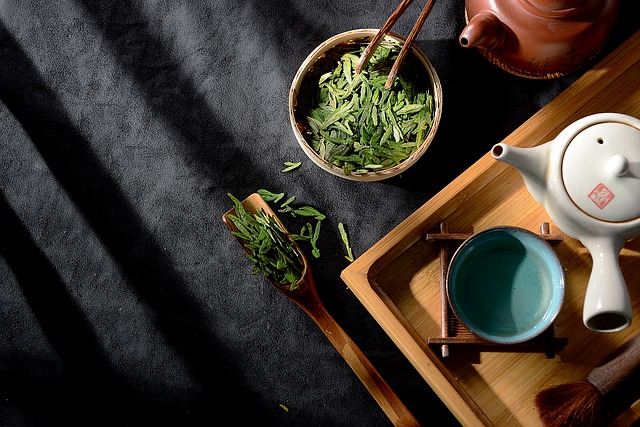
It’s tricky to really know when precisely white tea was first picked, produced and drunk. It is believed that it originated during the Song Dynasty (960 – 1269 AD) in Imperial China, yet even earlier accounts of its consumption have surfaced from the Tang Dynasty (918 – 907).
Regardless of the provenance of white tea, history suggests that royalty and emperors only drank white tea as a ceremonial fine tea. Just the first buds and two leaves were delicately picked in to make these 'tribute' teas symbolising honour and respect.
Is White Tea Really White?
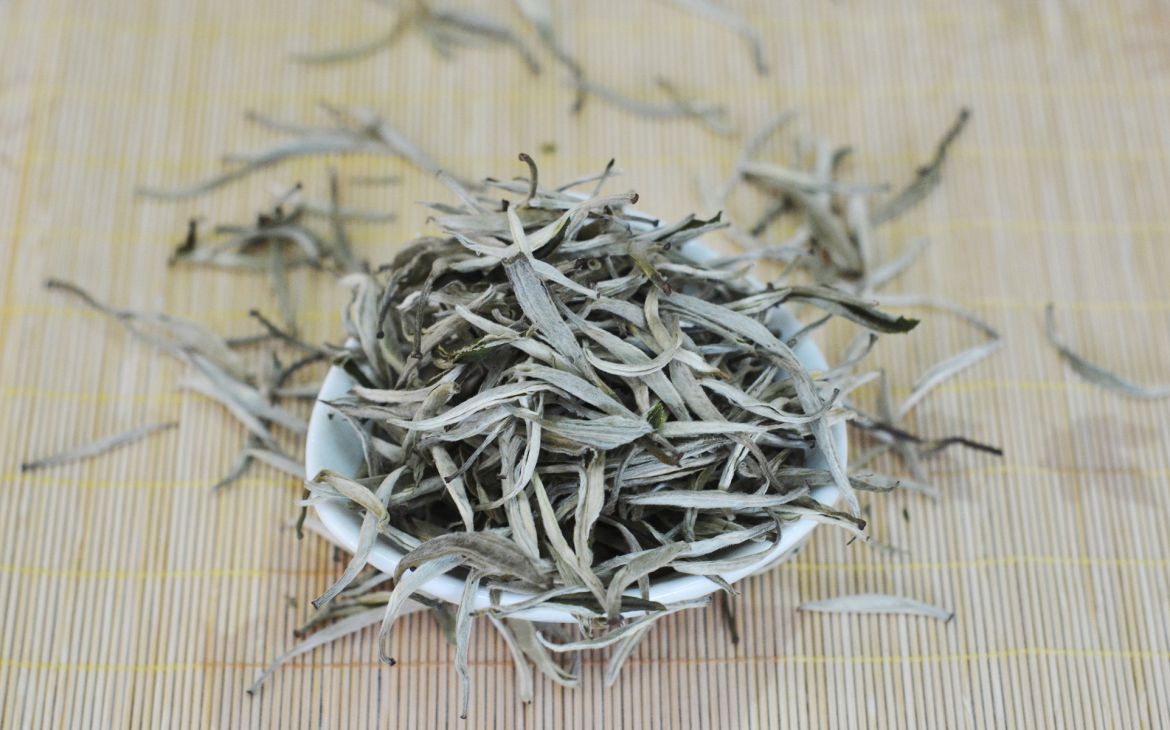
White tea isn’t really white in colour at all. It has a subtle creamy yellow tone when brewed. We believe that ‘white’ actually refers to the fine silvery-white ‘fluff’ found mostly on the underside of the tea plant’s youngest buds.
White Tea Flavour
White tea is light, delicate and subtle and is the perfect introduction to the world of fine Chinese teas. It has a sweet, almost honeyed taste and aroma that is subtly fresh and enticing. White tea has other nuances too, such as grassy, floral, fruity or herby, which are attributed to how and when the leaves were picked in the first place.
Our organic award-winning Pai Mu Tan, also known as White Peony, is of the highest quality and has a sweet aroma of freshness and light spice with a bright, golden-yellow cup. Our customers love it; just read our reviews!
Another, perhaps rarer white tea, is our organic loose-leaf Silver Yunnan with strikingly large, bright and silvery needle-like leaves. Picked with just two leaves and the bud it develops a full flavoured taste with a soft, yet fruity touch and lovely flowery finish.
Our White Teas
We have selected four of our favourite, purest white teas. You'll find out more about Silver Yunnan, Silver needle, Pai Mu Tan and White Yunnan. Here, simplicity and minimal interference is key to discovering some of the most beautiful white teas in the world.
Discover more about white teas here!
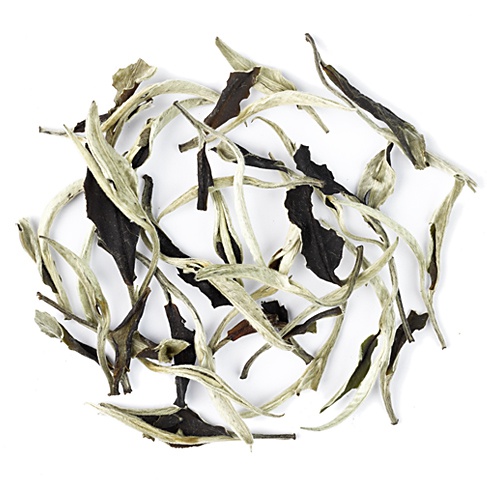
Organic Silver Yunnan
A rare and special loose-leaf white tea from the Chinese province of Yunnan
Our organic Silver Yunnan is harvested only in spring and therefore, one of the most exceptional of white teas. The Silver Yunnan leaves are large, bright and silvery.
Picked with just two leaves and the bud, Silver Yunnan develops a full flavoured taste with a soft, yet fruity touch and lovely flowery finish.
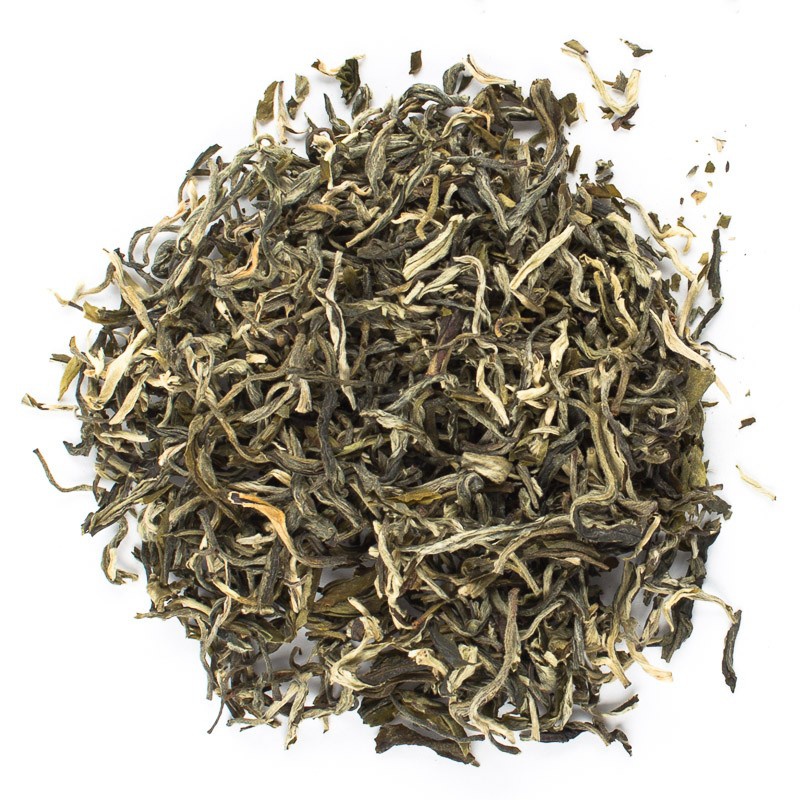
Organic Silver Needle
The Silver Needle is an exceptional tea that is carefully produced using only the freshest unopened buds of the Pai Hao tea plant.
The tea leaves are picked only two days of the year in the tea gardens of Qingshan, part of the Chinese province of Hunan. Silver Needle is grown in the mountainous landscape at an altitude of around 750m above sea level, which gives the tea a subtle flowery, almost sweet flavour.
The leaves are twisted and shaped into long silvery needles (Yin Zhen - Silver Needle) by hand, which also attributes to the higher cost of the fine tea. Drinking Silver Needle is a rare experience with a blossom-like fragrance, gentle, mild taste and a light green cup colour
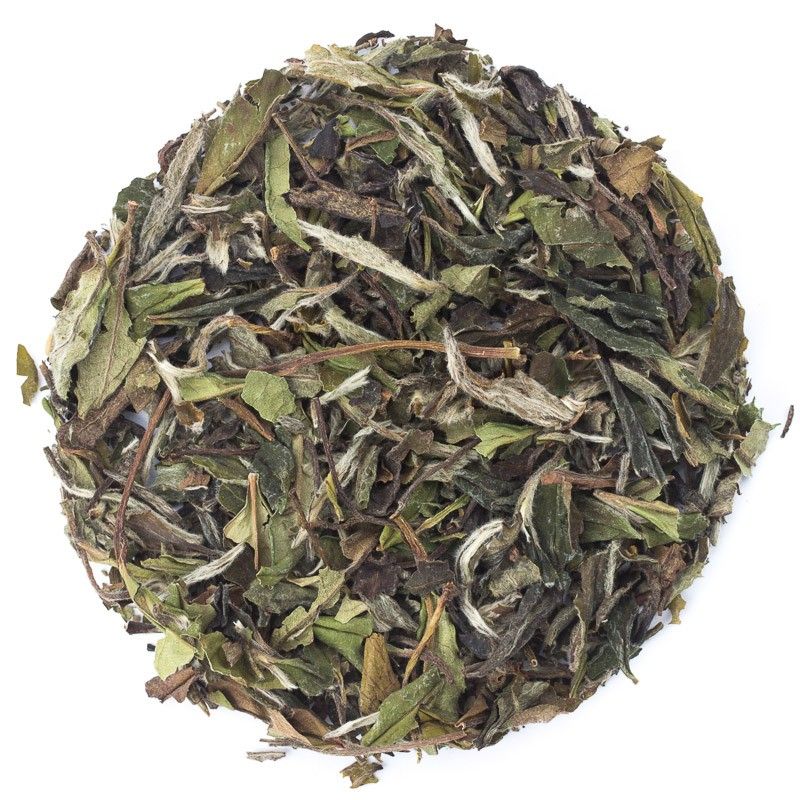
Organic Pai Mu Tan (White Peony)
Our organic loose leaf Pai Mu Tan is also known as White Peony white tea.
It has an award-winning mild, yet distinctive flavour and this Chinese white-leaved tea is of the highest quality. It is sweet on the nose, but lovers of silver needle white tea will also discover a distinctive freshness and a light spice with a bright, golden-yellow cup.
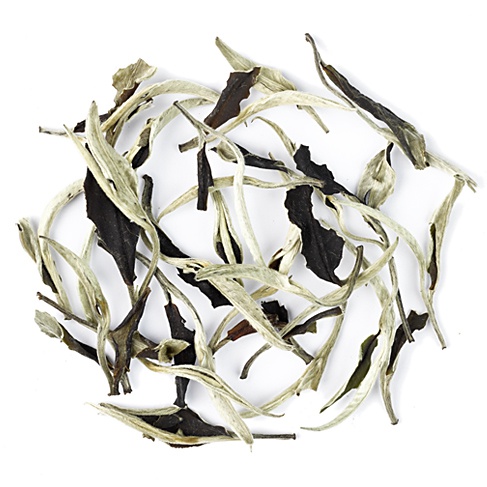
White Yunnan Dongzhai
Our White Yunnan is a first-grade white tea. ‘Dongzhai’ refers to the unusual look of this exceptional tea. The impressive dark leaves are reminiscent of a night's sky while the light velvety texture of the leaf reflects the moon. The leaves are predominantly large, and the buds show an abundance of fluffy, silvery-white 'pekoe'.
This fine tea depicts pleasant floral notes with an unusual hint of cocoa, which is soft on the palate with a fragrant, sweet and aromatic finish.
Our White Yunnan Dongzhai can be infused a further 2-3 infused times offering a yellow cup colour.

To really appreciate the delicate flavours and the dazzling silver buds and leaves, white tea should be made with loose leaves. The tea will be much more flavoursome if the leaves are brewed with filtered water at around 80c. The delicate character of white tea can easily be lost if the leaves are infused with water that is too hot.
Because of the fluffy, airy nature of modern white teas, a large heaped teaspoon of leaves per cup should be used. White tea is also suitable for repeat infusing of up to three times. The first infusion should be the shortest of around 90 seconds and can extend up to 2-3 minutes for the final steeping.
• Boil fresh water and leave to cool slightly.
• Place your white tea in a tea strainer or infuser
• Pour the freshly cooled hot water over the tea
• Steep the tea for the appropriate amount of time
• Strain the tea
• Sit back, relax and enjoy!
Does White Tea Contain Caffeine?
White tea, like green tea, does contain caffeine, although on average less than black tea. It also undergoes the least amount of processing of all the teas. Most tea leaves picked are left to oxidise to produce green and black tea, but with white teas, the leaves do not oxidise at all. White tea is perfect for those who love delicate flavours as they offer a sophisticated tasting experience.
Benefits of White Tea
All teas contain antioxidants, which help to fight free radicals and support the immune system, yet white tea is the most powerful. Because it goes through minimal interference in its production, it loses the least amount of its beneficial properties. White tea is the purest teas you can drink, and it’s full of polyphenols which act as antioxidants inside the body which fight against free radicals. It has been linked to, and some experts suggest that white tea can help to reverse skin damage caused by diet, stress and sun. Scientists are discovering that white tea can help to reduce the risk of heart disease, reduce bad cholesterol, aid weight loss and benefit oral hygiene.
How to Store White Tea
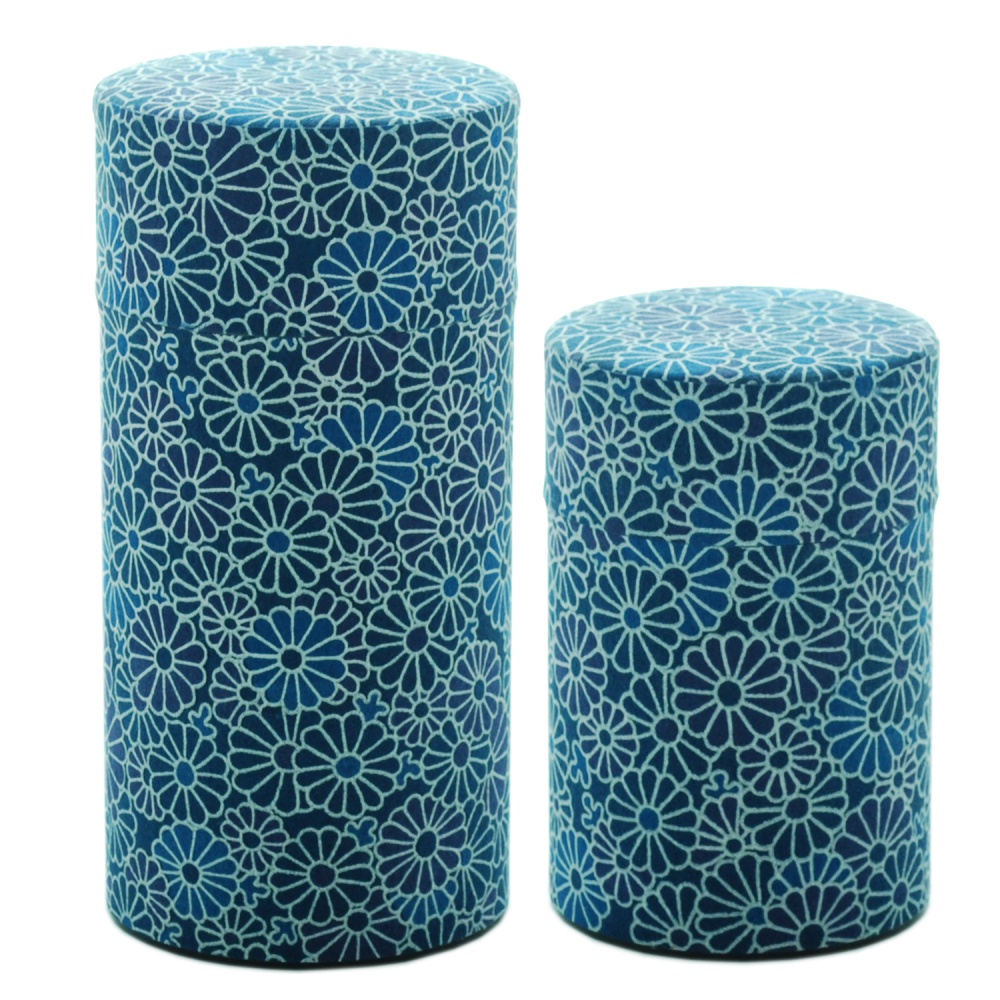
A high-quality tea caddy is an essential investment for any tea lover. It will protect your tea from moisture, sunlight and odours, all of which will negatively impact the quality of your tea.
All our caddies, tins and jars are food safe so the only flavour in your cup will be the flavour you choose; the tea!
- 14th August 2019












 EARN POINTS WITH OUR LOYALTY SCHEME
EARN POINTS WITH OUR LOYALTY SCHEME